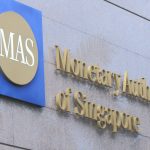Long lease Loyang Industrial site up for sale by Expression of Interest closing on Wednesday 13 May 2020, 3 pm.
JLL today announced the sale of 32 Loyang Crescent , an industrial site with a long remaining lease located within the Loyang Industrial Estate.
JLL is the exclusive marketing agent for the long lease Loyang industrial site
Table of Contents

The long lease Loyang industrial site consists of a 2-storey main building with a 4-storey extension annexed behind. The asset has two entrances and houses production spaces with cranes, warehousing and ancillary offices that are readily in operational status.
The long lease Loyang industrial site yahas a total gross floor area (GFA) of approximately 36,902 sq ft, sitting on a site of approximately 45,439 sq ft with a remaining tenure of about 31 years. In the Master Plan 2019, the long lease Loyang industrial site has a Business 2 zoning with a plot ratio of 2.5.
In addition to a good frontage along Loyang Crescent, this site is accessible via Tampines Expressway (TPE), Pan-Island Expressway (PIE) and public transport to Pasir Ris MRT is available at the door-step. It is also well supported by eateries and amenities in the vicinity.
Mr Nicholas Ng, Senior Director of Capital Markets at Jones Lang LaSalle, comments: “The long lease of this site, coupled with a ready to move in facility will be attractive for end users who are looking for a place for their operation and future expansion. There is still an untapped gross floor area of 76,697 sq ft for the subject property as it is only currently built up to a 0.81 plot ratio.”
“The subject property comes with an annex building comprising of a 4 –storey warehouse space with 6 metre ceiling height on each floor. Located in close proximity to the Loyang offshore supply base and Changi Airport, this asset would be a good fit for logistics companies who wish to establish a base in Loyang, or any other businesses that require a Business 2 zoning to operate in.“
The vendors, a supplier of heavy equipment and spares serving the oil and gas industry are seeking offers for the long lease Loyang industrial site in the region of S$8.8 million.
The long lease Loyang industrial site will be sold by Expression of Interest, which will close at 3pm on Wednesday 13 May 2020.
The JTC industrial property market statistics showed that overall rents across Singapore’s industrial sector remained unchanged quarter-on-quarter (QOQ) in Q4 2019, the second straight quarter of no-change. For the full year 2019, industrial sector rents were up 0.1% year-on-year (YOY), mainly due to the improvement in business parks.
Commenting on the industrial market performance in the last quarter of 2019, Mr Desmond Sim, CBRE’s Head of Research for Southeast Asia, said, “the factory submarket displayed mixed performances this quarter. The JTC Single-User Factory Rental Index inched up by 0.1% q-o-q, whereas occupancy rate fell by 0.3 percentage points q-o-q to 90.8%, partly because of excess supply from previous quarters which is still in the midst of being absorbed by the market.”
The JTC Multiple-User Factory Rental Index on the other hand eased by 0.1% q-o-q, which can be mainly attributed to the West region where a large pool of existing vacant stock remains; this is despite that the islandwide occupancy rate increased by 0.4 percentage points q-o-q to 87.5%.
Mr Sim added, “The warehouse sector saw an improvement from its slowdown from preceding quarters, with the JTC Warehouse Rental Index edging up by 0.1% q-o-q. However, it was also noted that warehouse occupancy dipped marginally by 0.1 percentage points q-o-q to 88.0%. Nonetheless, it is likely that the tight upcoming warehouse supply will lend support to occupancy.”
CBRE said that moving forward, with overall industrial rents remaining unchanged this quarter, there is some optimism that rents may have bottomed out in the industrial market.
CBRE Research is of the view that warehouse rents are poised to be more resilient, supported by a limited supply pipeline. Meanwhile, factory rents are expected to stay flat in 2020, suppressed by a prevailing vacancy volume of 40.1 million sq ft and a substantial amount of upcoming multiple-user factory stock.
Dominic Peters, Senior Director of Industrial Services at Colliers International, commenting on industrial market said:
“The Singapore manufacturing sector is expected to improve slowly in the coming quarters on the back of a gradual recovery of the global electronics cycle, driven by the normalisation of inventory in the global electronics supply chains, and the adoption of 5G technologies in telecommunication equipment and smartphones. However, with new supply of factory space in 2020 remaining sizable at around 15.6 million sq ft (net) – equivalent to about 4% of current factory stock – we anticipate that overall factory rent will likely remain subdued as supply outstrips demand in 2020.
Warehouse supply is set to increase to 3.6 million sq ft in 2020 (net) – equivalent to about 3% of current warehouse stock. Given the challenging global trade outlook and the elevated vacancy rate of 12.0% at the end of 2019, we expect warehouse rent to remain soft, stabilising in 2020-2021 before recovering from 2022 as supply diminishes.
Meanwhile, we forecast the flight to quality in business park and high-specs segments to continue due to limited supply amid higher demand for premium space. Centrally-located business parks and high-spec buildings with good amenities should attract healthy demand while those older and further away from MRT stations in the suburbs could face more difficulty in finding tenants, despite lower rents. Overall, we expect business park and high-specs rents to see slight upticks in the coming quarters, increasing by 1-2% YOY by the end of 2020.”
Brenda Ong, Cushman & Wakefield’s executive director and head of logistics and industrial, said she expects industrial rents for multi-user factories and single-user factories to moderate against an increase in supply in 2020.
Ms Ong added, “The single-user factory segment recorded some negative absorption as industrialists gave up or reduced their footprints in the space required for their business. Warehouse rents are also expected to stabilise and increase marginally because of healthy take-up in the past year, which we envisage will continue in 2020.”
But Tay Huey Ying, head of research and consultancy at JLL Singapore, says: “The industrial property market remains exposed to downside risks in 2020. While there are nascent signs of a turnaround in the manufacturing sector and economic growth is expected to pick up in 2020, this could be derailed by unexpected external events such as the Wuhan virus.”
She added: “Barring any unforeseen external shocks, we expect demand prospects to remain uneven across the various industrial property segments. Industrial developments with higher building specifications catering to the needs of new-economy firms (e.g. technology companies) and firms from higher value-added industries are likely to outperform the broader market.”
Ms Tay expects a surge in new business park completions this year. She noted that “five of the seven upcoming projects are purpose-built facilities with pre-commitments from major occupiers like Grab, Wilmar International and TÜV SÜD. Moreover, efforts by landlords to spruce up their older assets should enhance their marketability and ability to command higher rents on completion of upgrading works.”
Mr Paul Ho, chief mortgage officer at iCompareLoan, said, “commercial properties obviously command more rents than real estate like the long lease Loyang Industrial site .”
He added, “any newer industrial properties sitting on Business 1 (B1) zones are increasingly sophisticated and looking like Commercial buildings. In fact you might not even tell them apart unless you refer to the URA Zoning Master Plan. Since industrial B1 zones are better located nearer to housing estates or regional centres and no longer mainly in Jurong, there is substantial advantage to break the zoning rules.”
Mr Ho noted that with the rolling out of the 5G wireless network and with Singapore’s being at the forefront of smart nation initiatives, the industrial market as a whole will remain optimistic.






